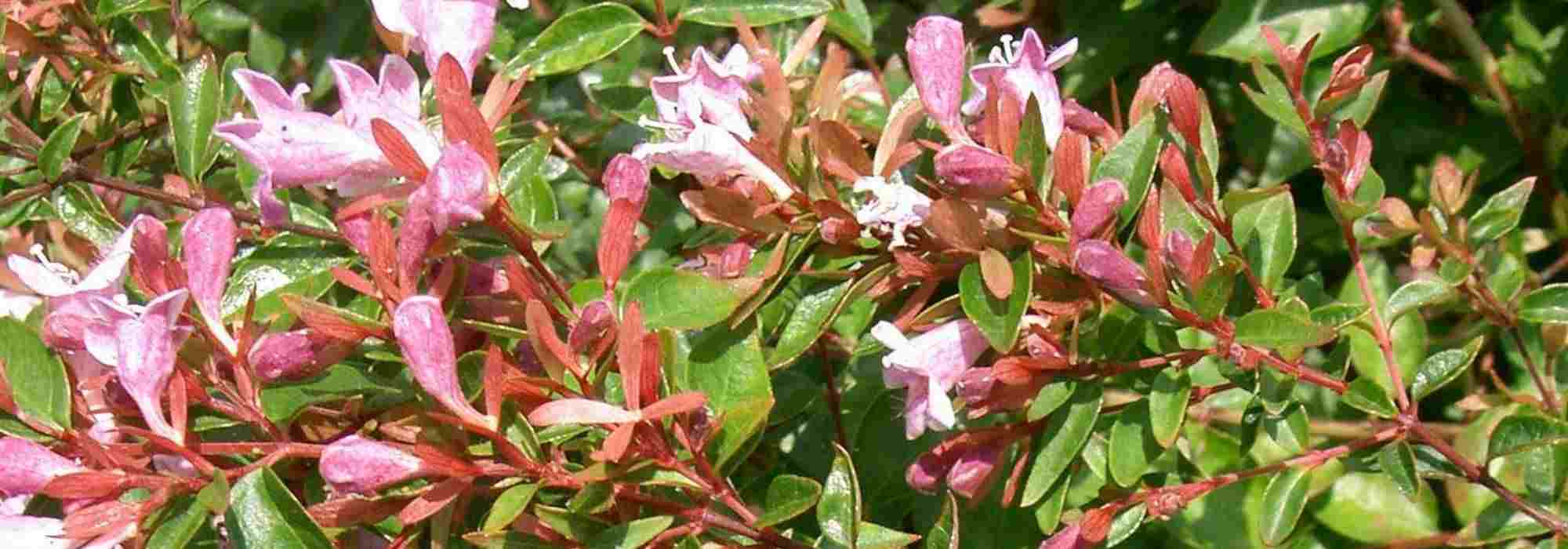
How to choose an Abelia?
Discover our buyer's guide
Contents
Abelia is a shrub valued for its decorative foliage, plain or variegated, and for its long, abundant and fragrant flowering. Native to Asia, there are now around thirty species. Most well known is large-flowered Abelia, Latin name Abelia grandiflora, which is available in numerous cultivars.
Abelias come in a range of sizes suitable for all garden types, from small to large. Dwarf Abelia performs wonderfully in small gardens or in a pot. Preferring a warm, sunny position sheltered from wind, some species and varieties tolerate partial shade. Good garden soil suits it very well provided it is well-drained and light. Indeed, Abelia does not like waterlogged, heavy or compact soil that can suffocate its roots and cause death. Apart from that, it is easy to grow and maintain, and not very susceptible to diseases and pests. In short, a shrub every garden should have!
Here are some ideas and tips to help you choose your Abelia.
Depending on its size
Abelias generally have a bushy habit, more or less compact. Some have flexible branches trailing to the ground, others have upright branches. Three size categories can be distinguished.
Dwarf Abelias are between 60 cm and 1 m tall, with a width between 80 cm and 1.20 m, for example:
- Abelia grandiflora ‘Petite Garden Minedward’ reaches 80 cm in height and 1 m in width; its habit is rounded. Of normal growth, its foliage is dark green and its flowers are lavender-pink;
- Abelia grandiflora ‘Sparkling Silver’ is even smaller and dense, at 50 cm high and 75 cm across. Its growth is slow. Its dark green foliage variegated cream-and-white and its pale pink flowers give this shrub a romantic feel.
→ Discover 7 dwarf Abelias in our care sheet and 5 Abelia varieties to grow in a pot.
Medium-sized Abelias are between 1 and 2 m in height and width:
- Abelia grandiflora ‘Pink Pong’ is bushy, reaching 1.75 m in height and 1.35 m in width at maturity. Its growth is moderate. It is distinguished by its lilac-pink flowers;
- Abelia grandiflora ‘Caramel Charm’ is wider (1.50 m) than tall (1.25 m). Its growth is rather slow. Its distinctive feature is caramel-coloured foliage on young shoots. It copes well with drought.
Large Abelias can reach more than 2 m in height and width, in some cases up to 3 m high:
- Abelia grandiflora, with glossy dark green foliage, reaches 2.5 m in height at maturity and 3 m in width. Its stems are upright and flexible, its growth is slow;
- Abelia grandiflora ‘Semperflorens’, of normal growth, can reach 2.5 m in all directions. Its flexible branches are delicately arched.
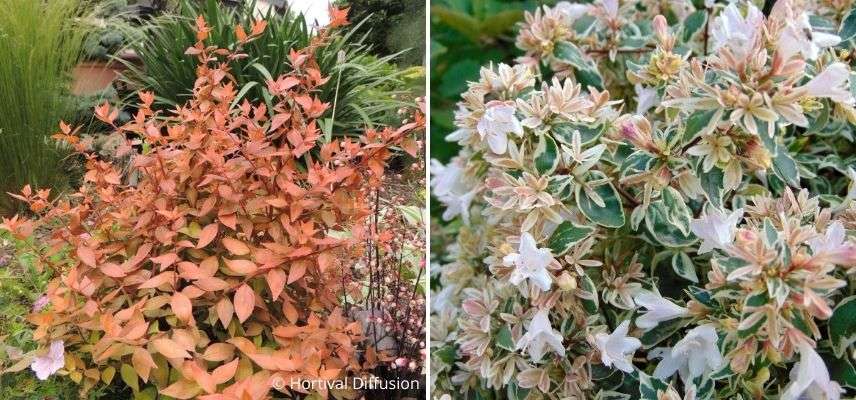
Left: Abelia grandiflora ‘Caramel Charm’ ; right: Abelia grandiflora ‘Sparkling Silver’
Read also
Abelia: planting, pruning and careDepending on foliage colour
Abelia foliage can be plain or variegated. Generally ovate and glossy, leaves change colour through the seasons.
Note that temperatures also affect the foliage of this shrub, which will then be evergreen, semi-evergreen or deciduous depending on winters. The same variety may very well keep its foliage under a mild climate and lose it under a harsher continental climate. Note that species with evergreen foliage will be less hardy.
Abelias with plain foliage:
- Abelia grandiflora ‘Edward Goucher’ has small evergreen leaves of dark green colour;
- Abelia chinensis is a deciduous to semi-evergreen bush with mid-green leaves;
- Abelia grandiflora ‘Pinky Bells’ bears pretty purple leaves at bud burst period, they become green at ripeness then regain a purple tinge with first cool nights.
Abelias with variegated foliage:
- Abelia grandiflora ‘Francis Mason’ will brighten a hedge with its semi-evergreen foliage variegated with gold;
- Abelia grandiflora ‘Tricolor Charm’ has rather striking semi-evergreen tricolour foliage: green, cream and pink!
For sumptuous autumn colours, we recommend:
- Abelia grandiflora ‘Kaleidoscope’ with evergreen green foliage variegated with yellow that turns red-orange in autumn,
- and Abelia grandiflora ‘Radiance’, with elegant evergreen green foliage variegated with white that turns pink-purple in autumn.

On left Abelia grandiflora ‘Edward Goucher’ ; top right Abelia grandiflora ‘Tricolor Charm’ ; bottom right Abelia grandiflora ‘Kaleidoscope’
Discover other Abelia
View all →Available in 2 sizes
Available in 1 sizes
Available in 2 sizes
Available in 1 sizes
Available in 3 sizes
Available in 1 sizes
Available in 3 sizes
Available in 1 sizes
Available in 1 sizes
Available in 1 sizes
Depending on hardiness
Most Abelias generally tolerate negative temperatures down to -10° and -15°C and are recommended mainly in south-west France, Pays de la Loire or Brittany. This sun- and heat-loving plant should be protected from cold winds that increase perceived temperature. If planted in colder regions, it is preferable to position it along a south-facing wall. Protect it in winter with a horticultural fleece and mulch its base for the first three years after planting. If shoots do freeze, do not hesitate to prune Abelia back to ground level so new shoots can resprout from the stump in spring. With its average hardiness, plant Abelia preferably at the end of winter after the last severe frosts. It will then have the year to establish and strengthen.
Dwarf Abelias have lower hardiness, such as Abelia zanderi ‘Little Richard’ and the very floriferous Abelia grandiflora ‘Petite Garden Minedward’, and are better suited to growing in pots and being brought indoors for winter.
Other Abelias are very hardy, for example :
- Abelia mosanensis ‘Monia’, pleasantly fragrant, can withstand temperatures lower than -15°C ;
- Abelia grandiflora ‘Edward Goucher’ with hardiness to -15°C; its flowers are larger than those of typical Abelia grandiflora.
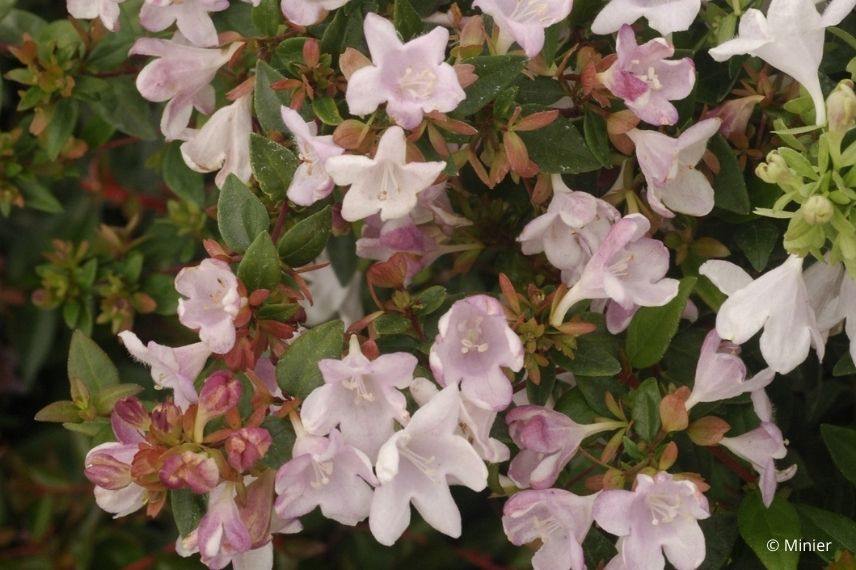
Abelia grandiflora ‘Petite Garden Minedward’
Depending on the colour and size of the flowers
Abelias produce a fragrant flowering made up of small, funnel-shaped flowers that are white, various shades of pink, or even salmon-yellow! Flowers generally appear from April/May until first frosts. The flower calyces bearing coloured sepals remain in place after the flowers fall, adding colour in autumn. The flowers are melliferous, meaning they provide nectar and pollen. They therefore help support insect populations that feed on them.
Abelias with white flowers :
- For Abelia grandiflora ‘Hopley’s’, 2 cm flowers appear from July to September. Flower buds are initially pink then turn white when they open;
- Abelia grandiflora ‘Sherwood’ flowers from June to October. Its 2 cm flowers are pale pinkish-white. Its small size makes it an excellent groundcover;
- Abelia mosanensis ‘Sweet Emotion’ has an early flowering from April to June. It bears 2 cm white flowers, slightly spotted with pink.
See also 7 Abelias with white flowers for a bright garden.
Abelias with pink flowers :
- Abelia parviflora ‘Bumble Bee’ has an abundant lilac-pink flowering from July to September. The flared flowers measure about 1.5 cm across;
- The large flowers of Abelia grandiflora ‘Pinky Bells’ appear from June to September in purplish-pink, mauve and white, measuring about 3 cm across.
Abelias with yellow flowers :
- One of the rare Abelias to have pale yellow flowers: Abelia grandiflora ‘Sunny Charm’. The reverse of the flowers is pink. At about 2.5 cm across, the flowers appear from July to October.
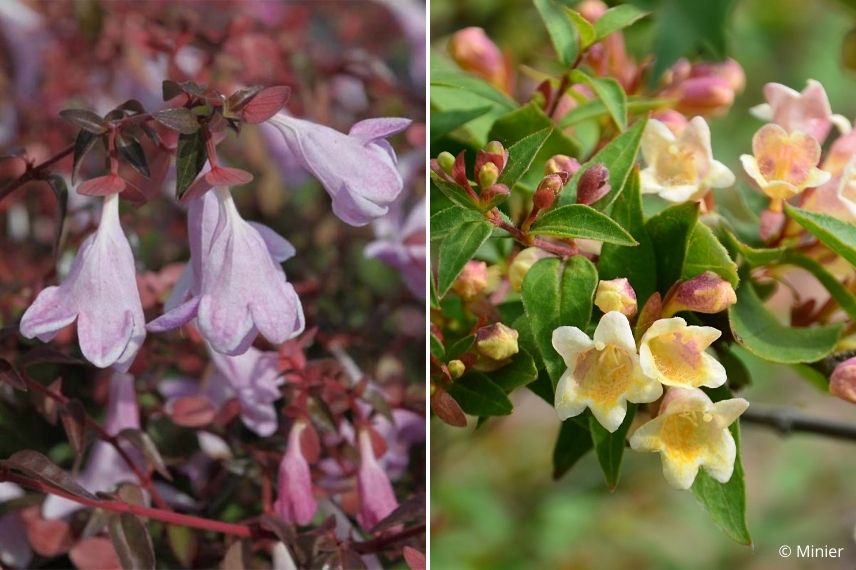
On the left Abelia grandiflora ‘Pinky Bells’ (Photo Denolf) ; on the right Abelia grandiflora ‘Sunny Charm’
Depending on the fragrance
Abelia flowers are generally fragrant and fill the air with a sweet jasmine scent. Some species or varieties are more so than others.
Examples include:
- most fragrant in May–June, Abelia mosanensis ‘Monia’; very hardy and takes on a lovely orangey colour in autumn;
- Abelia chinensis, with very abundant flowering in white clusters,
- groundcover Abelia grandiflora ‘Prostrata’,
- and Abelia mosanensis ‘Sweet Emotion’, with early flowering.
Also read 7 Abelia with fragrant flowers for an enchanting garden.
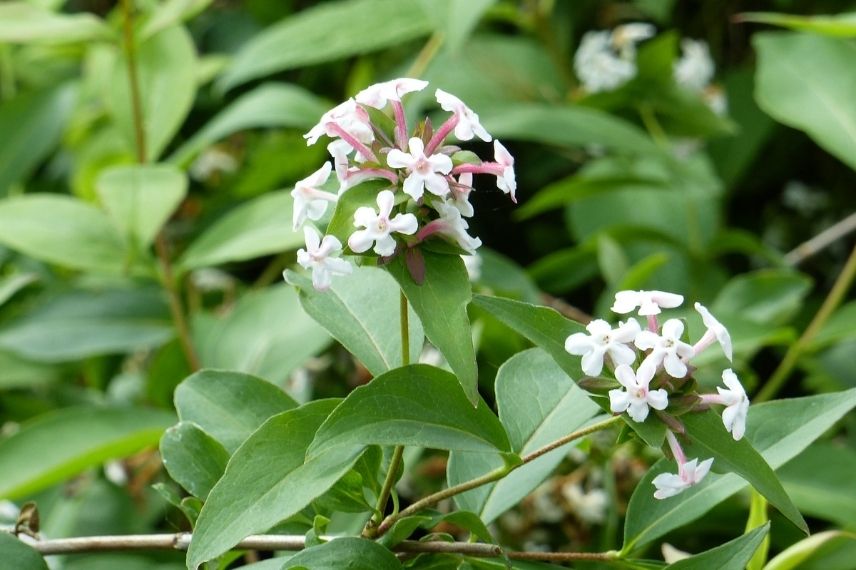
Abelia mosanensis ‘Monia’
Depending on use
Abelias can be used in many situations. Whether planted alone, as a hedge, in a mixed border, as groundcover or in a large pot, this shrub will delight gardeners of all kinds.
- at front of border, opt for a compact variety such as Abelia zanderi ‘Little Richard’ which pairs well with low perennials or dwarf roses;
- at back of border, prefer a medium-sized Abelia such as Abelia grandiflora ‘Pink Pong’ planted with other bushes, beauty bush, bluebeard or Russian sage;
- as a hedge with lilacs or mock‑oranges for example, choose a larger specimen such as Chinese Abelia, Abelia chinensis, which produces a profusion of small flowers;
- as groundcover, the compact cushion habit of Abelia grandiflora ‘Magic Daydream’ is well suited;
- planted alone, near a door or window so you can enjoy the pleasant fragrance of the flowers, we recommend Abelia mosanensis ‘Monia’;
- in a large pot, the yellow flowers of Abelia grandiflora ‘Sunny Charm’ will brighten a terrace or balcony. In this case, provide drainage at bottom of pot and mulch to prevent soil evaporation in summer, protect it with winter fleece or bring the pot indoors for winter. To learn more, see our care sheet: To grow Abelia in a pot.
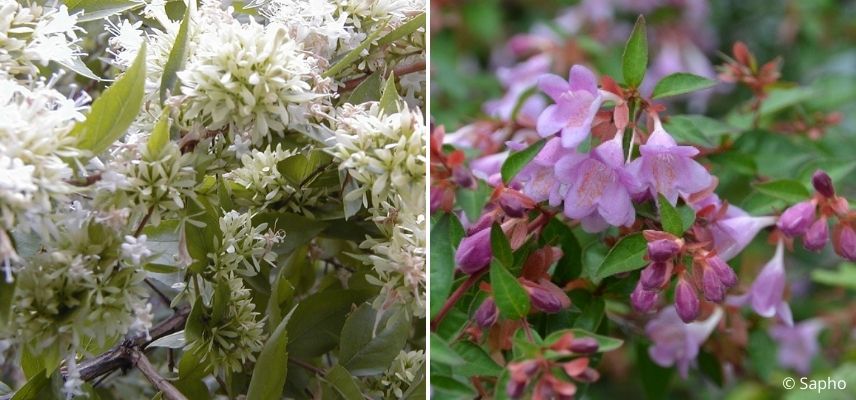
Left: Abelia chinensis; right: Abelia grandiflora ‘Pink Pong’
Find out more
Also see our comprehensive guide: Abelia: planting, growing tips, pruning, maintenance
- Subscribe!
- Contents
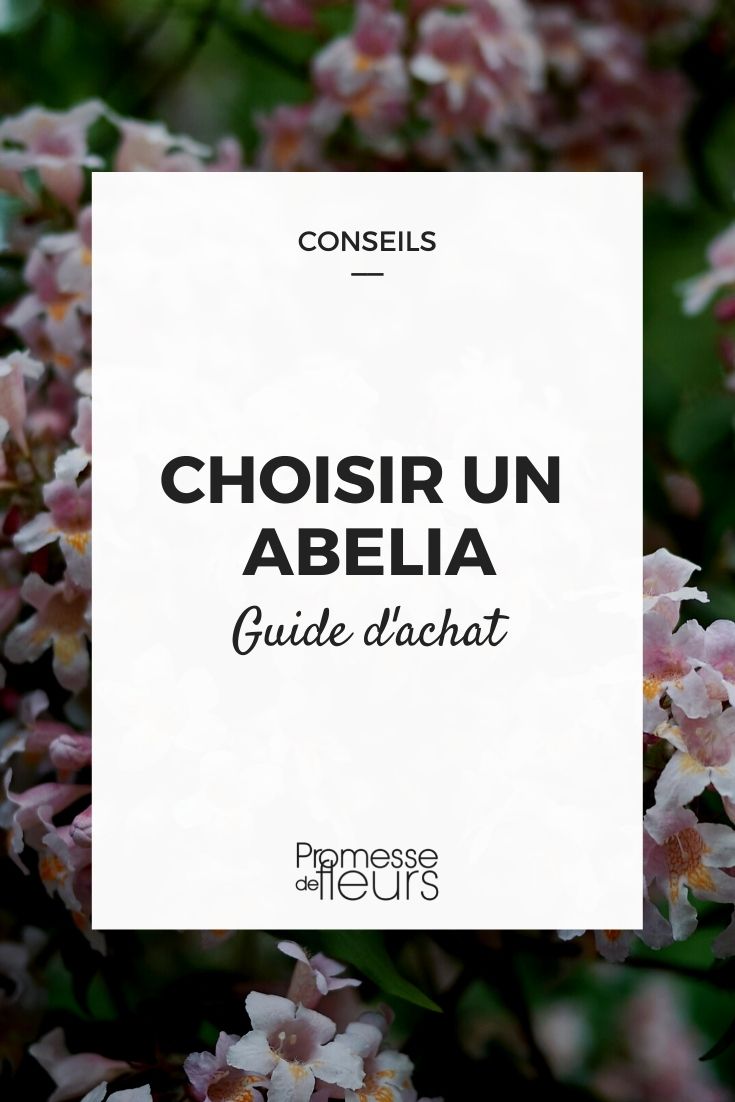































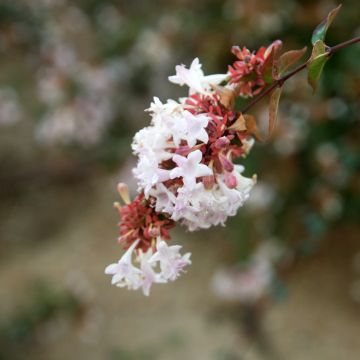
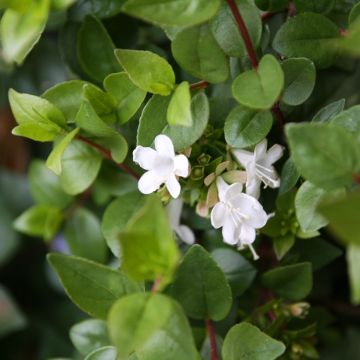
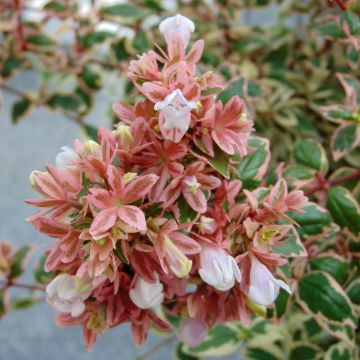
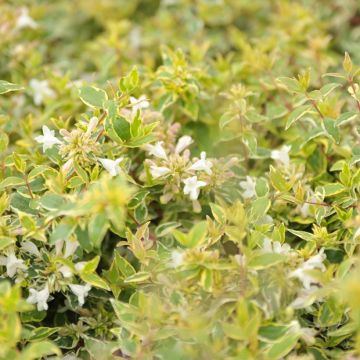
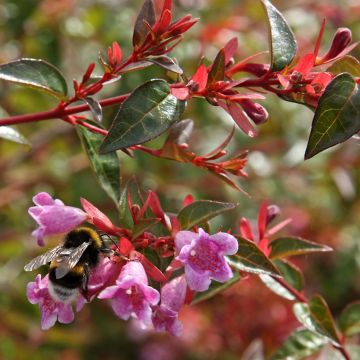
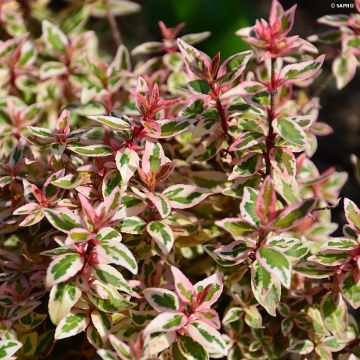
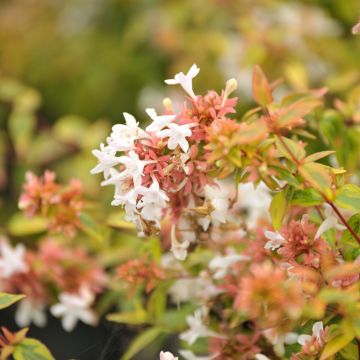
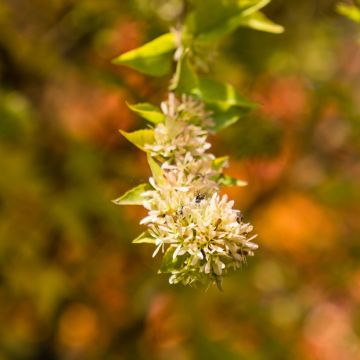
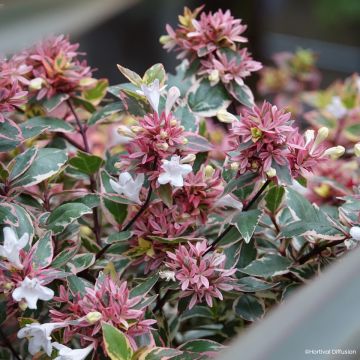
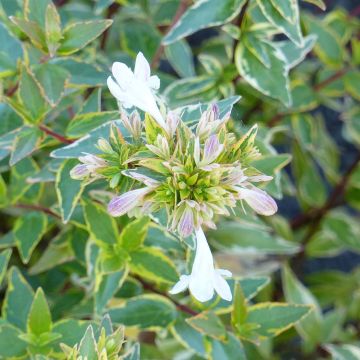
Comments